By Pete Vack and Dino Brunori
Perhaps the mystery of the missing Alfa Romeo 412 began back in 1975 with the publication of the photo book, Alfa Romeo Milano. British journalist Michael Frostick captioned a picture of Felice Bonetto’s special-bodied Alfa Romeo thusly:
Something of a mystery. The Alfa Romeo files say “16 cylinder 4500 Mille Miglia 1954 (Bonetto).” One can only assume a car was made up with a bored-out version of the Type 162, 3 liter, 16-cylinder car, or more likely, someone has made a mistake somewhere!
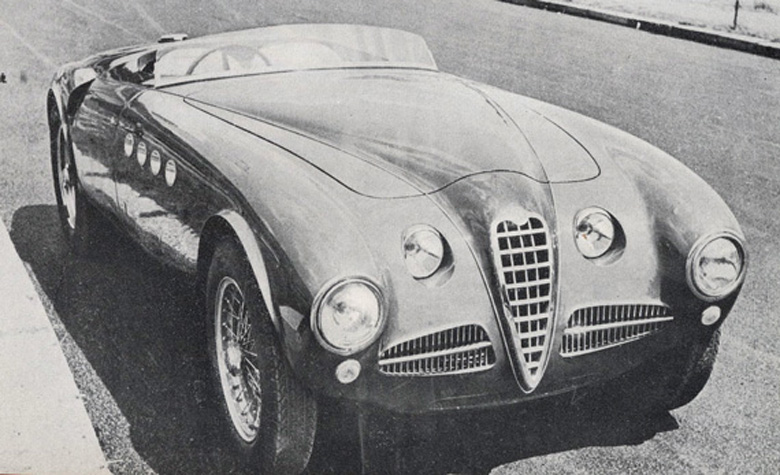
The Bonetto Alfa Romeo as rebodied by Vignale in 1951. It disappeared in 1955. Photo from ‘Alfa Romeo Milano.
Indeed there was a mystery and a mistake, as Alfa 2.9 sleuth Simon Moore realized. The Bonetto car was fairly well documented in a variety of contemporary magazines as one of the four 1939 V12 (not a V16) Tipo 412 Alfas, rebodied post war by Bonetto via Vignale. The serial number was 412151, and after it was retired from competition in 1952, it was offered to Henry Wessells III for $3200 by Franco Cortese in 1954. Henry missed the deal and the car reportedly went to Spain. But by 1955 there was no trace of the car. It had seemingly disappeared, as old race cars are wont to do.
Tracing the engine
Although the Bonetto car was not specifically an Alfa 2.9, it nonetheless was part of the family and of great interest to Alfa historian Moore. By the time Moore wrote the second edition of his landmark book The Immortal 2.9 in 2008, he was on the trail of the remains of the car and the engine, but couldn’t quite pull it all together. The rare Alfa V12 engine provided the clue. It was known that the 412 engine was in the possession of Roberta Nardi, daughter of car builder Enrico Nardi. Enter Simon Kidston, working for Brooks Auctions. In mid-March of 1996, Kidston recalled for Moore, “I was contacted by Gino Macaluso, the owner of the Girard-Perregaux watch company. Roberta Nardi, whose father Enrico had left her an old Alfa Romeo engine which was languishing in the basement of her home near Turin.” Kidston recalls that Roberta didn’t know which car it had come from, but she wanted to sell it. Kidston put it up for auction in 1998, and it went to Lawrence Auriana from New York. Moore put the information in his 2008 revised edition, but the whereabouts of the body and chassis remained a mystery.
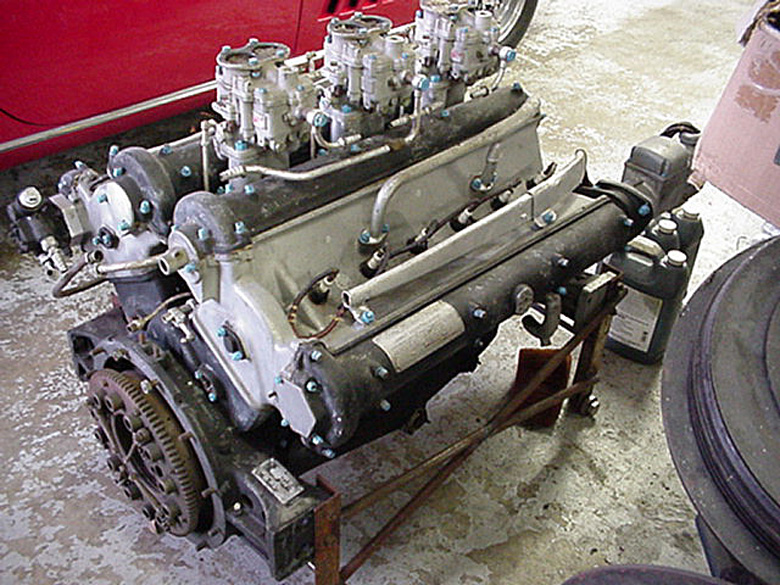
VeloceToday Editor Pete Vack, while on an interview with David Letterman in 2000, met Letterman’s car handler, Francois Sicard, at his shop in Connecticut in 2000. There, he almost tripped over a large, strange looking engine. Sicard was completely silent on the subject, but it Vack soon determined that it was an Alfa Romeo 412 engine but had no idea what car the engine came from or who it belonged to. The connection to Auriana and the Nardi sale and, eventually the Bonetto car and a special Nardi came much later.
Investigating the Nardi connection
While Simon Moore continued to track the Alfa side of the story, back in Turin, Dino Brunori was deeply involved in writing his landmark book Enrico Nardi, A fast life. For years Brunori gathered missing Nardi documents and with the help of the late Andrea Curami and John de Boer, published his book in 2009.
One of the documents found by Brunori was a letter dated January 1962 to Road & Track in reference to photographs for an article about a new project. Nardi could not provide photos of the car he was building “as we are required not to divulge anything by our customers.” The car in question was a special Nardi to be powered by a Plymouth Golden Commando 300hp V8, commissioned by William Simpson of Miami, Fla. (Simpson also owned the Nardi “Raggio Azzuro.”) With the help of Otto Vu author Tony Andriaensens, Brunori obtained photos of the Simpson car under construction at the Michelotti workshop in 1962, and was able to determine that Simpson took delivery of what was a beautiful and fast GT car.
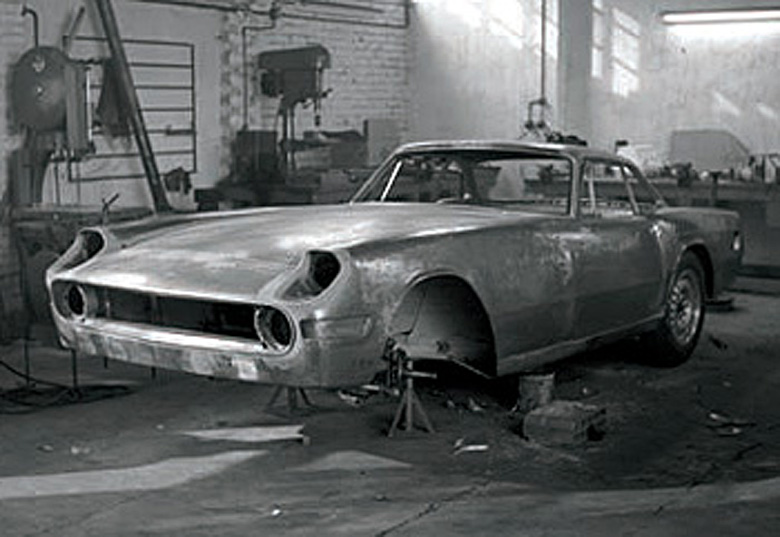
This photo is courtesy of Tony Andriaensens and shows the Silver Ray being constructed at Michelotti’s shop.
Brunori also knew that there was a connection to the Bonetto car. On a register of technical drawings pertaining to the Simpson GT (named Raggio de’Argento, or Silver Ray), Brunori noted that it read, “AR modified frame-Raggio d’Argento”. That was one clue, as the Simpson car had a frame that was seemingly constructed from a variety of sources. A second clue came from journalist Jean Bernardet who was close to Enrico Nardi. In an article written in the 1970s about the Raggio d’Argento, Bernardet wrote that Enrico Nardi was a friend of Felice Bonetto, and that the Simpson Nardi was built with “mechanical parts derived from Alfa.” Finally, it was known that the Alfa 412 V12, s/n 412151, was still in the hands of the Nardi family. Alas, the whereabouts of the Simpson car itself was not well known at the time.
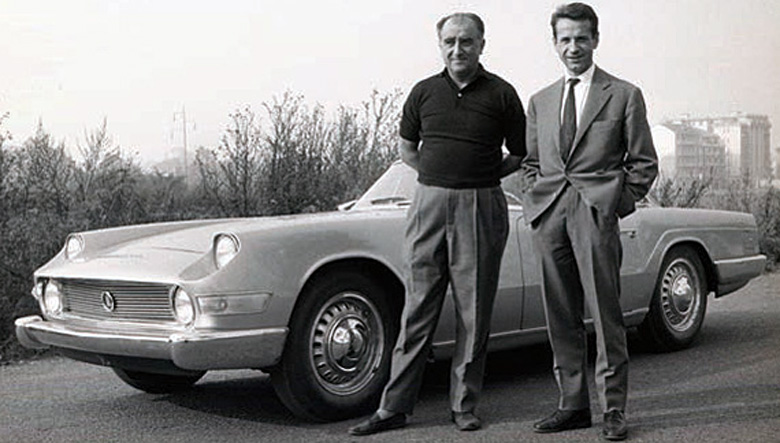
Enrico Nardi, left, and Michelotti pose with the Raggio d’Argento, The finished car was shipped to William Simpson in September of 1961. Courtesy Dino Brunori
Brunori published all these clues in his book, and then laid out the pros and cons of the assumption that the chassis of the Bonetto 412 had been incorporated into the Simpson “Raggio d’Argento.” The use of the V8 would have required the modification of the entire front part of the chassis; the Plymouth also used the automatic transmission, instead of the Alfa transaxle, which would require more changes. Brunori asked why Nardi had embarked on such a complicated job simply to recycle an old Alfa racing chassis; it didn’t make sense. But he noted that the front suspension of the Silver Ray was Alfa and the rear featured semi elliptic springs, so perhaps it was the Alfa chassis after all.
Back to you, Simon
In the 1970s, Alfa doyen Luigi Fusi had told Moore that the chassis had been used by Nardi to build a special car for a U.S. customer, but at the time, Moore had looked Stateside. “Mistakenly, I thought I should be looking for a Nardi-Danese 6c2500.” In 1980 he found a chassis which he thought to be the ex-Bonetto car. But it turned out to be an 8C2900A chassis which Moore then restored for himself. The search for the Bonetto chassis resumed.
After the publication of Nardi, A fast life, Simon Moore put two and two together, and agreed that the Silver Ray probably did make use of parts from the missing 412 chassis. It was discovered that the Silver Ray was sold in 1967 to David Hersh, who died in 1985. The car then was shown at a Sacramento concours by J.B. Moak in 1986, and then sold to a Monroe Strawn. It was finally re-discovered, returned to running condition and is now in the hands of Julian Majzub in the U.K. as reported in the Automobile magazine of September 13 and Classic and Sportscar magazine, August 2013.
Meanwhile, in Turin…
In Italy, Dino Brunori was also doing more detective work. He found a photo from American Marc Wallach at the factory in 1959. Marc was photographed standing by the Bonetto Alfa—though hardly noticeable, enough of the coachwork was in view to recognize the Vignale body. That put the Bonetto Alfa on the premise shortly before the Silver Ray was constructed. Then, in 2010, Brunori found more eye witness evidence. We’ll let Brunori take it from here: “Three years ago I was introduced to Miss Felicita Vigna, a charming lady who lives in the suburbs of Torino and was the last personal secretary of Enrico Nardi. She worked in the company from 1962 to 1971 and she has a few memories about the commercial side of Silver Ray. She recalled how the car was commissioned, about a visit of Mr. Simpson with the car while under construction, and the relations with Michelotti.”
“In 1966 she married Pierluigi Chiara, who had joined Nardi in 1963 coming from Abarth. He became Enrico’s right hand man. Mr. Chiara joined the company too late to know the story of the Silver Ray, but he had a friend, still alive, by the name of Mr. Italo Garessio who was in the company from 1959 to 1970. Mr. Chiara arranged for me a meeting in his office in Torino with all of us. In the picture from Italo’s Nardi days, he is on the left and Pierluigi on the right. Italo is a witness of the 412 story and more important, he worked on the car! He personally cut the tubular chassis with a blowtorch, re-welded part of it, mainly the front and part of the rear, the frame supporting the fireproof bulkhead, and matched all the pieces with a boxed-steel frame to strengthen what was then used as the chassis for the Silver Ray. The V12 engine, gears, and transmission were set aside for future needs [and finally sold in 1998]. The aluminum Vignale body was parked for a while in the courtyard under a canopy, and then later handed to Rocco Motto as aluminum to recycle for other bodies.”
So ends the search for the Bonetto Alfa V12. Or does it? At this time, there are no chassis numbers yet available to verify the obvious conclusion. Moore states that it is now in Majzub’s fabulous collection. Says Moore, “Whether he will use his large collection of Alfa Romeo parts to restore the Bonetto 412, or keep it as a magnificent example of American-Italian cooperation with its unique Michelotti body, is not yet known.”
This article is from the VeloceToday archives, November 21, 2913
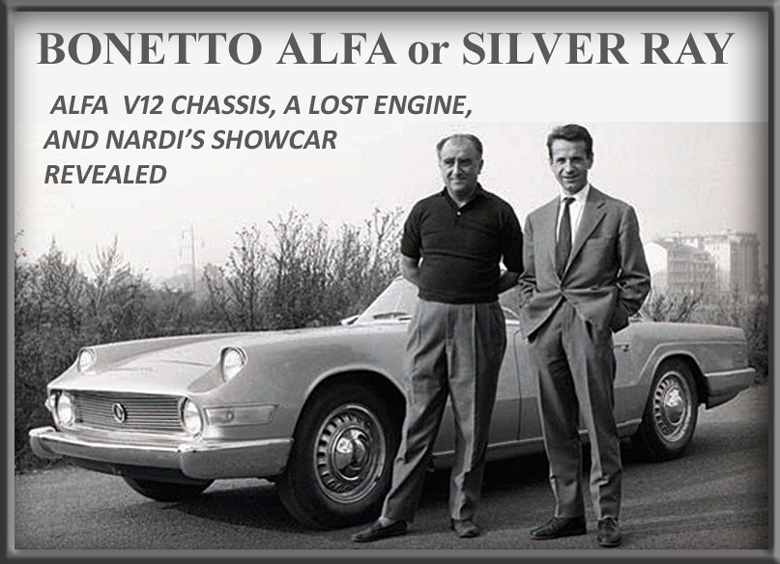

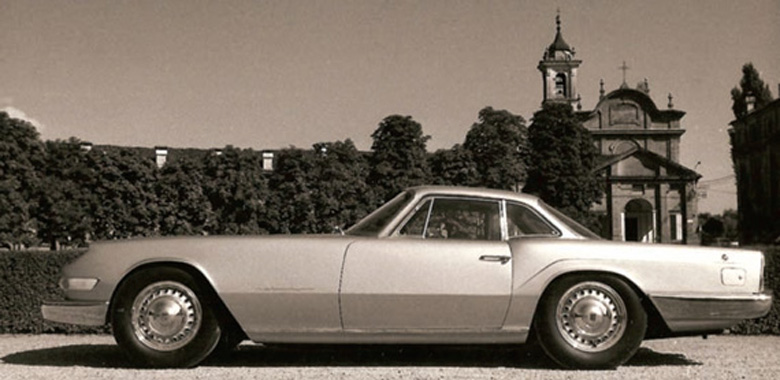
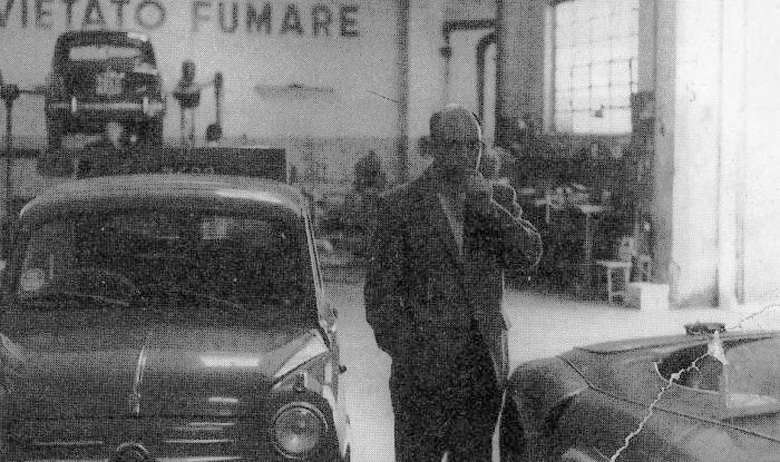
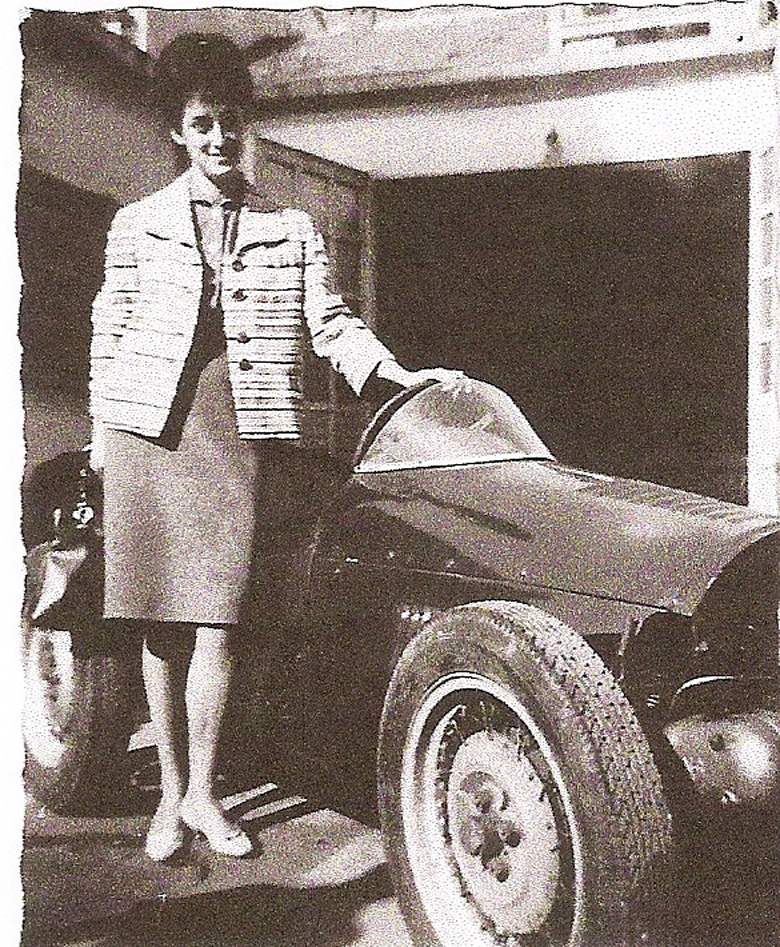
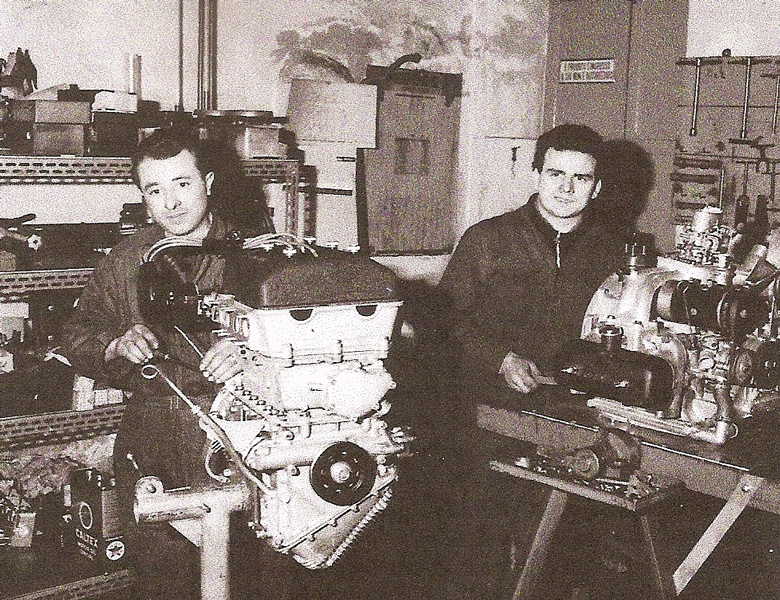
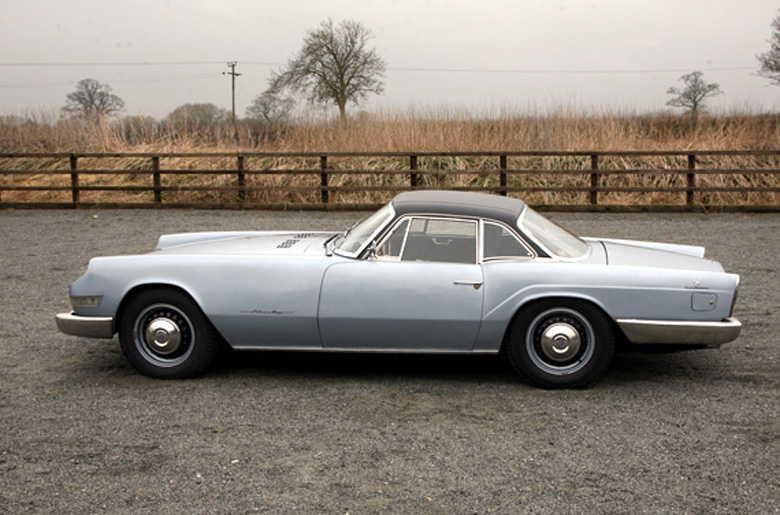
It boggles the mind that someone would destroy that oh-so-magnificent and unique Alfa to make the ugly Silver Ray.
It would be a long haul for Julian to create it again but — I hope he does! It’s one of my all-time favourite cars.